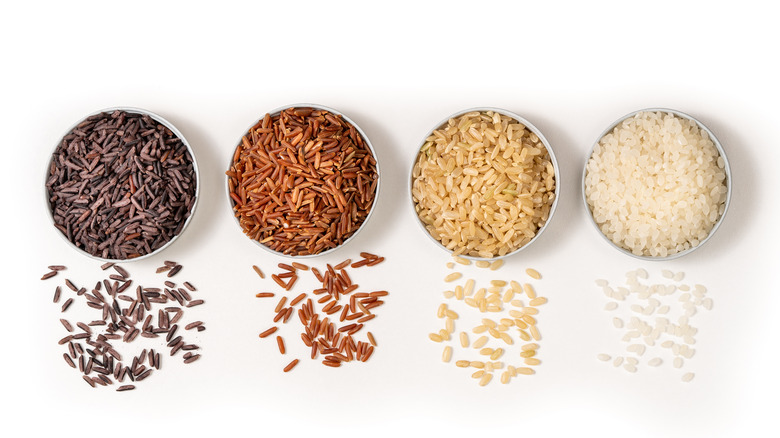Whole Grains Versus Enriched Grains: What's The Difference?
One of the best ways to improve your health is to make healthy changes to your diet. Dieticians would agree that getting enough fiber is important for reaching your health goals. According to Mayo Clinic, eating a diet high in fiber helps lower cholesterol levels, manage weight, regulate blood sugar, promote digestive health, and reduce your risk of heart disease and cancer.
From rice to quinoa, and popcorn to multi-grain bread, grains are a great way to add more fiber to your diet. According to the United States Department of Agriculture (USDA), there are two groups of grains: whole and refined. Enriched grains fall into the category of refined grains. You may be thinking that all grains are created equal, but when it comes to the nutrition you get from eating them, that is not the case. So, what's the difference between whole grains and enriched grains?
The big difference between enriched and whole grains
According to the Harvard T.H. Chan School of Public Health, when you consume whole grains, you are eating all three parts of the grain — the bran, endosperm, and germ. The bran is the outermost layer of the grain containing fiber, vitamins, and minerals like B vitamins and zinc. The endosperm is the middle layer of the grain containing protein, carbohydrates, and small amounts of vitamins and minerals. The innermost layer, the germ, is a source of healthy fats, antioxidants, and vitamins like vitamin E.
Enriched grains, on the other hand, have been processed or milled, whereby one or more of these three key parts are removed. During this process, over half of the grain's nutrients may be lost. You may wonder why our food manufacturers do this. According to the Mayo Clinic, refined grains have a longer shelf-life and a finer texture, making products like pastries, cereal, white bread, and crackers tastier. Enriching refined grains means they add back some of the nutrients that were lost during the milling process. So, which is healthier?
How to choose between the two
A 2020 study published in Advances in Nutrition suggests whole grains are consistently associated with lowered disease risk, improved body weight, and lower rates of chronic illness. But the study also found that enriched grains can help bolster nutritional intake, including iron, thiamin, vitamin B-6, riboflavin, and folate.
However, while enriched grains may have certain nutrients added back, they may be lacking other nutrients, including fiber, which may not be added back to the grain, according to the Mayo Clinic. You may now be thinking of avoiding refined grains altogether. But Advances in Nutrition suggests there is no increased risk of disease when eating a diet with half whole grains and half refined or enriched grains. In fact, enriched grains can provide an important source of folate that whole grains can't. Thus, by combining the two, you may be able to best cover all your nutritional bases.



